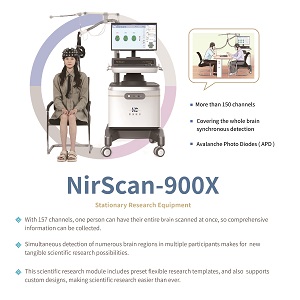Facebook just announced that they are experimenting with mind-reading technology using optical neuro-imaging systems. This technology will allow people to type words by thoughts at 100 words per minute. Check out the news here.
Wow! This is unbelievable! The “optical neuro-imaging” technology is probably NIRS (Near Infrared Spectroscopy). As a NIRS researcher myself, I have done some mind-reading experiments and found NIRS signal (blood flow) is too slow for rapid mind-reading. With machine learning technology such as SVM, we can decode a signal at most ~2s after a behavior event (see our paper). This is still too far from a real life application.
But some researchers have suggested that there might be some subtle “fast signal” embedded in NIRS signal. In a 2004 (!) paper, Morren et al published a paper tilted “Detection of fast neuronal signals in the motor cortex from functional near infrared spectroscopy measurements using independent component analysis“. In this paper, they claimed that fast signal, in the range of milliseconds rather than seconds, can be detected.
Maybe this is what Facebook is using?

